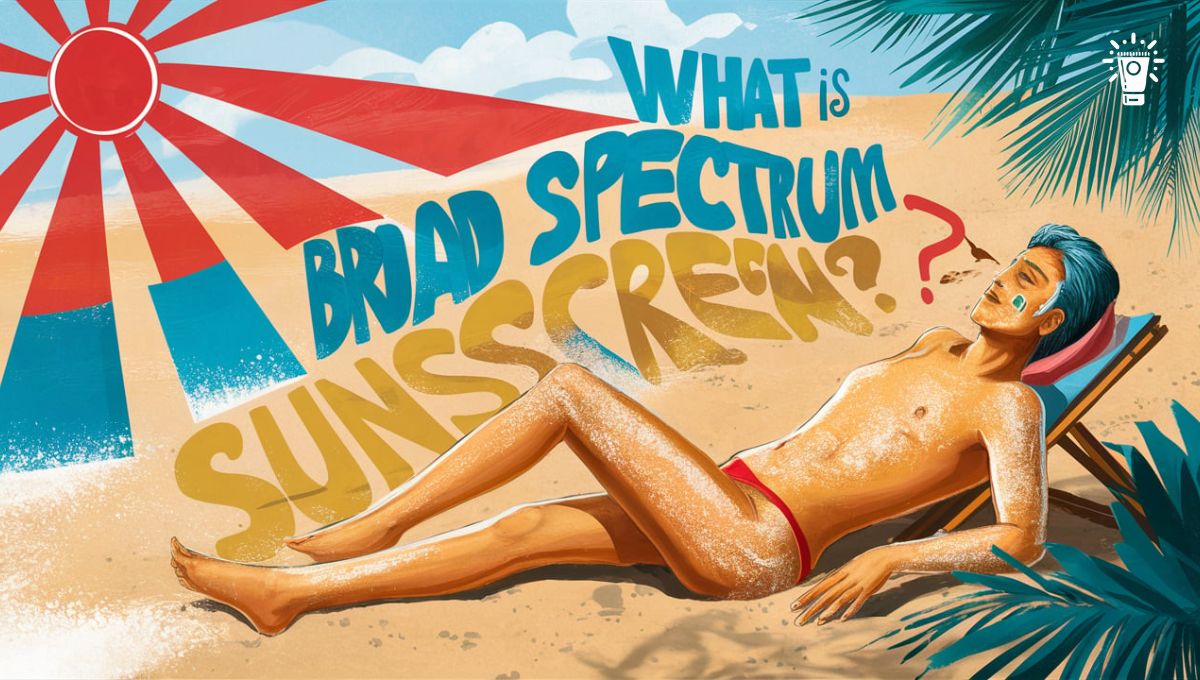


When considering broad spectrum sunscreen, grasping the fact that not all sunscreens offer the same level of protection is vital. You may have come across labels stating ‘broad spectrum,’ but what does that truly signify for your skin?
Broad spectrum sunscreens protect you from both UVA and UVB rays, which is pivotal for preventing not only sunburn but also long-term skin damage and aging. How precisely do these UV rays impact your skin, and why should you prioritize understanding the distinction between UVA and UVB? Let’s dissect it so you can make educated decisions for your skin’s well-being.
Wide-range sunscreen refers to products that shield your skin from both UVA and UVB rays. This dual protection is vital for maintaining your skin’s health. UVA rays can prematurely age your skin, causing wrinkles and age spots, while UVB rays are the primary cause of sunburn. By using wide-range sunscreen, you’re providing thorough sun protection.

When you choose a wide-range sunscreen, you’re not just shielding against sunburn. You’re also reducing the risk of skin cancer and preventing long-term damage. It’s important to understand that not all sunscreens offer this level of protection. So, always check the label to make sure it specifies ‘wide-range.’
Wide-range sunscreens come in various forms, including lotions, sprays, and sticks. They can be water-resistant, making them ideal for swimming or sweating. No matter the type, applying it correctly is key. Use a generous amount and reapply every two hours, especially after swimming or sweating.
Incorporating wide-range sunscreen into your daily routine can greatly enhance your skin health. It’s a simple yet effective way to protect yourself from harmful UV rays, ensuring your skin stays healthy and youthful. Remember, sun protection is essential every day, not just on sunny days.
Also Read: Zinc Oxide Essentials: What You Need to Know Now
UV rays frequently penetrate the skin, causing immediate and long-term harm. When you’re exposed to the sun, these rays can lead to various skin issues that impact your health and appearance. Understanding how UV rays affect your skin helps highlight the sunscreen importance and underscores the significance for skin cancer prevention.
First, UV rays can accelerate skin aging. They break down collagen and elastin, leading to wrinkles, fine lines, and a loss of skin elasticity. You might notice your skin becoming rougher and less youthful over time.
Second, sun exposure without protection significantly raises the risk of skin cancer. UV radiation damages DNA in skin cells, potentially leading to mutations and cancerous growths. This makes wearing sunscreen every day essential for your health.
Third, UV rays can cause immediate effects like sunburn. This painful condition results from the skin’s inflammatory response to UV damage and can increase the risk of long-term skin problems.
Key effects of UV rays on the skin:
Using broad spectrum sunscreen can help mitigate these risks and protect your skin from both immediate and long-term harm.
Not all ultraviolet rays are the same, and understanding the difference between UVA and UVB rays is vital for proper skin protection.

UVA rays penetrate the skin deeply, playing a major role in skin aging and wrinkles. These rays are constant throughout the day and year, which means you’re exposed to them even on cloudy days. While UVA rays contribute to tanning, they can also damage your skin’s DNA, leading to long-term skin health issues.
UVB rays are the main culprits behind sunburn. They affect the outer layer of your skin and vary in intensity depending on the time of day and season, being strongest between 10 a.m. and 4 p.m. during the summer months. UVB rays are crucial for vitamin D synthesis but are also responsible for immediate sunburn and play a significant role in developing skin cancers.
For effective sun protection and skin health, it’s crucial to shield yourself from both UVA and UVB rays.
Tanning might seem desirable, but it’s a sign of skin damage. Using a broad-spectrum sunscreen helps in sunburn prevention and reduces the risk of long-term skin issues. So, don’t skip on sun protection—make it a daily habit.
Selecting an all-inclusive sunscreen offers thorough protection against both UVA and UVB rays, ensuring your skin stays healthy and youthful. This wide spectrum sun protection is essential for maintaining your skin’s overall health and appearance.
Wide spectrum sunscreens offer numerous benefits:
Incorporating wide spectrum sunscreen into your daily routine is a simple yet effective way to prioritize your skin health. It provides inclusive sun protection, ensuring you can enjoy outdoor activities without compromising your skin’s well-being.
SPF, or Sun Protection Factor, measures how well a sunscreen protects your skin from UVB rays, while broad spectrum coverage guarantees you’re also shielded from UVA rays. Understanding the SPF importance is vital. SPF tells you how long you’ll be protected from sunburn compared to unprotected skin.
For instance, SPF 30 means you can stay in the sun 30 times longer without burning than you could without any sunscreen.
When choosing a broad spectrum sunscreen, consider the SPF number carefully. Dermatologists often recommend using SPF 30 or higher for adequate protection. But don’t just rely on the number—proper sunscreen application is key.
Apply generously and evenly to all exposed skin about 15 minutes before heading outside. Reapply at least every two hours, and immediately after swimming, sweating, or towel drying.
Also Read: Sunscreen For Your Skin Type: Finding The Perfect Match
When selecting a wide range sunscreen, focus on ingredients like zinc oxide, titanium dioxide, avobenzone, and octocrylene for effective protection. These ingredients form a shield against both UVA and UVB rays, guaranteeing thorough sun protection.
Let’s break down why these components are essential for your skin care routine.
Including these ingredients in your sunscreen guarantees you’re getting thorough coverage. They each play a unique role in protecting your skin from sun damage, making them indispensable for effective sun care.
Choose a product that combines these elements to maintain healthy, protected skin all year round.
Exploring the different types of broad spectrum sunscreens can help you find the perfect match for your skin’s needs and lifestyle. Broad spectrum sunscreens come in various forms to suit different preferences and activities.

If you’re active and spend a lot of time outdoors, you might benefit from waterproof formulas. These sunscreens are designed to stay on your skin even when you’re sweating or swimming, offering reliable protection without frequent reapplication.
For those with sensitive skin or specific concerns, mineral-based sunscreens, often containing zinc oxide or titanium dioxide, are a great option. They tend to be gentler and less likely to cause irritation.
On the other hand, chemical sunscreens, which absorb UV rays, are known for their lightweight feel and ease of application.
When it comes to families, sunscreen for kids is a must-have. These formulas are specifically designed to be gentle on young skin, often free from harsh chemicals and fragrances. They provide robust protection while minimizing the risk of irritation. Some even come in fun, colorful packaging to make the application process more enjoyable for children.
Selecting the appropriate broad spectrum sunscreen is just the first step; understanding how to apply it correctly guarantees you receive the maximum protection. To make sure you’re getting the most out of your sunscreen, follow the proper technique and be mindful of common mistakes to avoid.
First, apply sunscreen generously—most people don’t use enough. A good rule of thumb is to use about one ounce (a shot glass full) for your entire body. Don’t forget those easy-to-miss areas like the ears, back of the neck, and tops of your feet.
Here are some key tips to remember:
Avoid these common mistakes: skipping spots, not reapplying often enough, and underestimating the amount needed.
Many misconceptions surround a wide range of sunscreen, leading to improper use and reduced effectiveness.

One common myth is that you don’t need sunscreen on cloudy days. However, up to 80% of UV rays can penetrate clouds, causing skin damage and accelerating skin aging. Always apply broad spectrum sunscreen regardless of the weather to maximize sunscreen effectiveness.
Another myth is that a higher SPF means you can stay in the sun longer without reapplying. While a higher SPF offers more protection against UVB rays, it doesn’t prolong the time you can safely spend in the sun. Broad spectrum sunscreen needs to be reapplied every two hours, especially after swimming or sweating, to maintain its effectiveness.
Some believe sunscreen is only necessary at the beach or pool. In reality, daily use of broad spectrum sunscreen can greatly reduce the risk of skin aging and skin cancer. UV rays are present year-round and can impact your skin even during everyday activities like driving or walking.
Lastly, there’s a misconception that people with darker skin don’t need sunscreen. While melanin offers some protection, it doesn’t completely prevent UV damage. Everyone, regardless of skin tone, should use broad spectrum sunscreen to guard against harmful UV rays.
Selecting the appropriate sunscreen can seem overwhelming, but understanding key factors will help you make an informed decision. With so many options on the market, knowing which features matter most for optimal skin protection is vital.
First, always search for broad spectrum sunscreen, which guards you from both UVA and UVB rays, decreasing the risk of skin cancer and premature aging.
When choosing sunscreen, keep these points in mind:
Proper sunscreen application is indispensable. Apply generously 15 minutes before sun exposure and reapply every two hours, or immediately after swimming or sweating.
Your skin protection relies on consistent and correct use, so don’t skimp on quantity or frequency. By paying attention to these details, you’ll guarantee your skin gets the protection it requires.
Also Read: Mineral Sunscreen: Safer Sun Protection Explained
To sum up, using broad spectrum sunscreen is essential for safeguarding your skin from harmful UVA and UVB rays. It aids in preventing sunburn, premature aging, and even skin cancer.
Ensure to select a sunscreen with a minimum of SPF 30, and apply it generously 15 minutes before heading outdoors. Remember to reapply every two hours, particularly after swimming or sweating.
By adhering to these guidelines, you’ll maintain your skin’s health and protect it from sun damage.